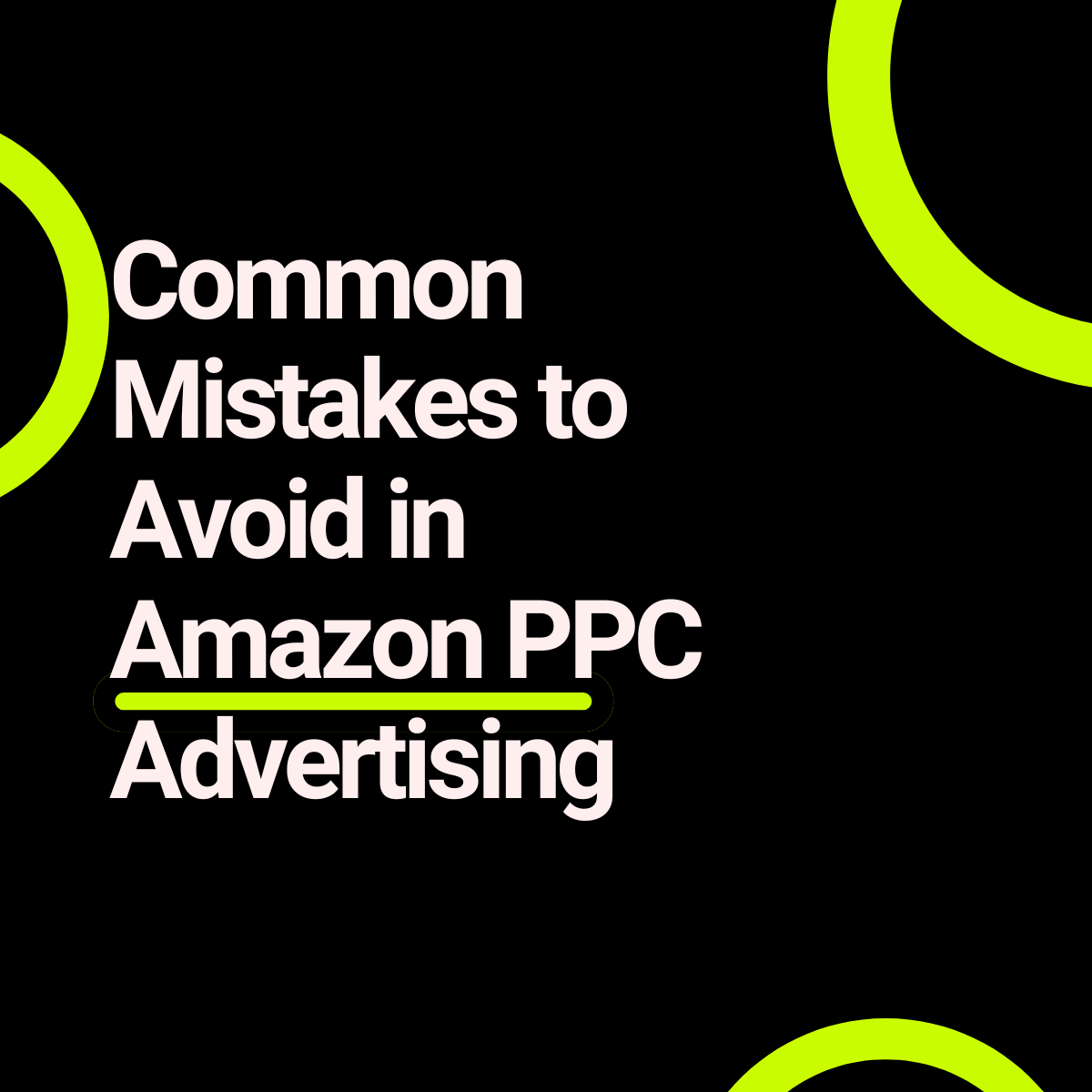Amazon Pay-Per-Click (PPC) advertising is a powerful tool for sellers looking to boost visibility and drive sales on the e-commerce platform. However, navigating the intricacies of Amazon PPC requires strategic planning and vigilant oversight to avoid common pitfalls that can drain your budget and diminish your return on investment (ROI).
I. Introduction to Amazon PPC Advertising
Amazon PPC advertising allows sellers to bid on keywords and place ads within search results and product detail pages, paying only when a user clicks on the ad. With millions of products competing for attention on Amazon, PPC offers a valuable opportunity to increase visibility and drive targeted traffic to your listings.
A. Importance of Effective PPC Campaigns
- Visibility: PPC ads can appear prominently in search results, increasing the likelihood of clicks and conversions.
- Targeted Reach: By targeting specific keywords and demographics, sellers can reach users actively searching for their products.
- Controlled Spending: PPC campaigns allow for precise budget allocation and performance tracking, enabling sellers to optimize spending for maximum ROI.
II. Amazon PPC Advertising Mistakes
A. Lack of Keyword Research
Mistake: Neglecting Comprehensive Keyword Research
- Impact: Without thorough keyword research, sellers may target irrelevant or low-performing keywords, leading to wasted ad spend and poor campaign performance.
- Solution: Conduct extensive keyword research using tools like Amazon’s own Keyword Tool and third-party platforms to identify high-converting keywords relevant to your products.
B. Poor Ad Copy and Creative
Mistake: Ineffective Ad Copy and Creative Elements
- Impact: Weak ad copy and uninspiring creative elements fail to captivate users and compel them to click, resulting in low click-through rates (CTRs) and diminished ad performance.
- Solution: Craft compelling ad copy that highlights unique selling points, offers incentives, and includes clear calls-to-action (CTAs). Utilize high-quality images and videos to enhance visual appeal and entice users.
C. Overlooking Negative Keywords
Mistake: Ignoring Negative Keywords
- Impact: Failing to incorporate negative keywords can result in irrelevant clicks and wasted ad spend, especially for broad match or phrase match campaigns.
- Solution: Regularly review search term reports and add irrelevant or underperforming keywords as negatives to prevent ads from appearing for irrelevant searches.
D. Neglecting Bid Optimization
Mistake: Set-It-and-Forget-It Bidding Strategies
- Impact: Without ongoing bid optimization, sellers risk overspending on underperforming keywords or missing opportunities to increase visibility for high-converting terms.
- Solution: Continuously monitor campaign performance, adjust bids based on keyword performance and competition, and leverage automated bidding tools to streamline bid management.
E. Ignoring Product Listing Optimization
Mistake: Failing to Optimize Product Listings
- Impact: Even the most compelling ads won’t drive conversions if product listings lack essential information, such as detailed descriptions, high-quality images, and competitive pricing.
- Solution: Optimize product listings for relevancy and conversion by including relevant keywords, compelling product descriptions, clear pricing, and attractive images.
III. Best Practices for Amazon PPC Success
A. Comprehensive Campaign Structure
Campaign Structure Best Practices
- Segmentation: Organize campaigns into logical ad groups based on product categories or themes to ensure targeted messaging and precise budget allocation.
- Ad Group Specificity: Create tightly themed ad groups with closely related keywords and products to improve relevance and ad quality.
B. Ongoing Performance Monitoring
Monitoring and Optimization Strategies
- Regular Review: Monitor campaign performance metrics such as CTR, conversion rate, and ACOS (Advertising Cost of Sales) to identify trends and areas for improvement.
- Continuous Optimization: Implement iterative adjustments to bidding, targeting, and ad creative based on performance data to maximize ROI and campaign effectiveness.
C. Adapting to Algorithm Changes
Adaptation to Amazon Algorithm Updates
- Stay Informed: Keep abreast of Amazon’s algorithm updates and policy changes to proactively adjust PPC strategies and remain compliant with platform guidelines.
- Flexibility: Maintain flexibility in campaign management tactics to adapt to evolving market conditions and algorithmic shifts.
IV. Conclusion
Effective Amazon PPC advertising requires a strategic approach, ongoing optimization, and a commitment to continuous improvement. By avoiding common mistakes such as neglecting keyword research, overlooking bid optimization, and failing to optimize product listings, sellers can maximize the impact of their PPC campaigns and achieve their business objectives on the platform. Implementing best practices such as comprehensive campaign structuring, ongoing performance monitoring, and adaptation to algorithm changes will set sellers on the path to Amazon PPC success, driving visibility, traffic, and ultimately, sales.

